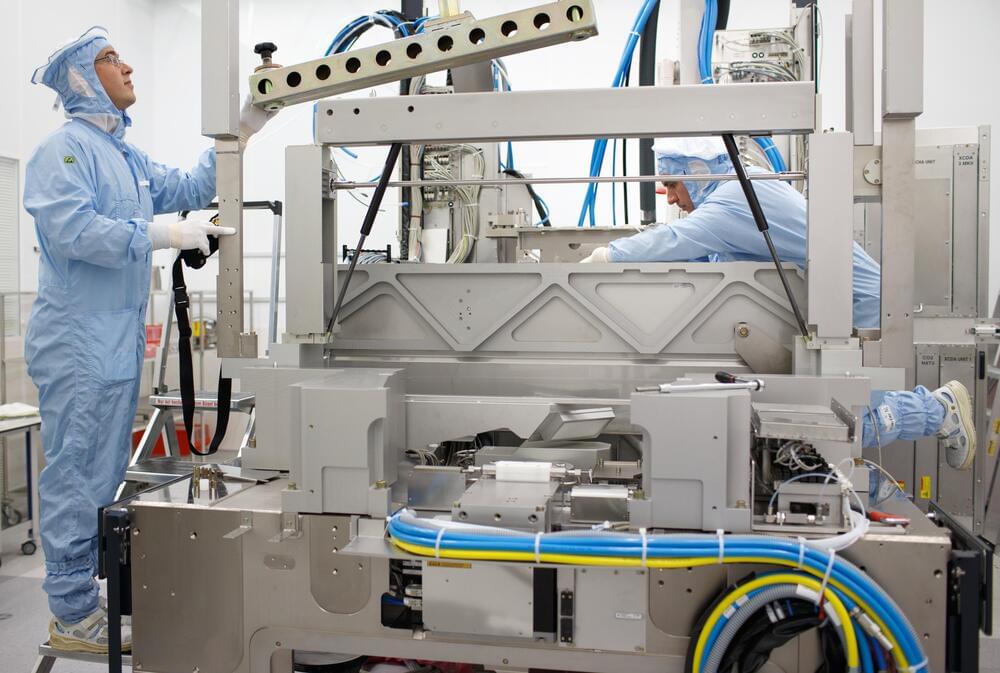“Star Trek” actor William Shatner, 90 will be the oldest person to go to space on the upcoming Blue Origin flight.


There is no other space project currently in the works that gets more attention than the Starship. The next generation of spacecraft coming from SpaceX, the one that is meant to take us to the Moon and even to Mars, has eclipsed pretty much everything else, from the ill-fated Boeing Starliner to the upcoming Artemis I launch.

The National Nanotechnology Initiative promised a lot. It has delivered more.
facebook Share on Facebook Share on Twitter Share via Email.


LONDON – ASML, a Dutch firm that makes high-tech machines used in semiconductor manufacturing, will see its market value climb from $302 billion to more than $500 billion next year, according to two tech investors.
Nathan Benaich, founder and general partner of boutique VC firm Air Street Capital, and Ian Hogarth, who sold his AI start-up Songkick to Warner Music Group, wrote in their annual “State of AI” report Tuesday that Europe’s largest tech company is the little-known “linchpin” in the global semiconductor industry.
Founded in 1,984 ASML provides chip makers with essential hardware, software and services to mass produce patterns on silicon using a method called lithography.
Endocrine disrupting chemicals cause adverse effects in animals. But limited scientific information exists on potential health problems in humans. Because people are typically exposed to multiple at the same time, assessing public health effects is difficult.
Many chemicals, both natural and man-made, may mimic or interfere with the body’s hormones, known as the endocrine system. Called endocrine disruptors, these chemicals are linked with developmental, reproductive, brain, immune, and other problems.
Endocrine disruptors are found in many everyday products, including some plastic bottles and containers, liners of metal food cans, detergents, flame retardants, food, toys, cosmetics, and pesticides.
Some endocrine-disrupting chemicals are slow to break-down in the environment. That characteristic makes them potentially hazardous over time.
Creating Smart Home Ecosystems — Enabling Health & Well-Being In Every Home — Viren Shah, VP & Chief Digital Officer, GE Appliances, Haier
Mr. Viren Shah is Vice President & Chief Digital Officer, at GE Appliances (GEA — https://www.geappliances.com/), the American home appliance manufacturer, now a majority owned subsidiary of the Chinese multinational home appliances company, Haier (https://www.haierappliances.com/).
Mr. Shah has been with GEA since October 2,018 in which time he was appointed to lead the business through a digital transformation with a focus on data/intelligence at the center of gravity.
Prior to becoming part of the Haier company, Mr. Shah was the CIO at Masco Cabinetry, and CIO Council Leader for their parent company, Masco Corporation, the international conglomerate manufacturer of products for the home improvement and new home construction markets.
Mr. Shah has more than 20 years of global experience in creating business value using technology with a strong focus on customers for Fortune 10 organizations, such as his decade at the Walmart organization. He has contributed as a senior leader towards the success of startups, turnarounds and global mergers and acquisitions.

Most organizations successfully stood up with new ways for employees to work remotely or interact with customers far faster than previously thought possible.
But as we transition from focusing on maintaining business continuity toward driving growth, we should not lose sight of the forest for the trees.
The leaps forward companies made in response to the COVID crisis set them up to benefit from virtuous cycles that complement and reinforce each other to turbocharge growth.

New research, published in the journal Patterns and led by the University of Glasgow’s School of Psychology and Neuroscience, uses 3D modeling to analyze the way Deep Neural Networks—part of the broader family of machine learning—process information, to visualize how their information processing matches that of humans.
It is hoped this new work will pave the way for the creation of more dependable AI technology that will process information like humans and make errors that we can understand and predict.
One of the challenges still facing AI development is how to better understand the process of machine thinking, and whether it matches how humans process information, in order to ensure accuracy. Deep Neural Networks are often presented as the current best model of human decision-making behavior, achieving or even exceeding human performance in some tasks. However, even deceptively simple visual discrimination tasks can reveal clear inconsistencies and errors from the AI models, when compared to humans.
